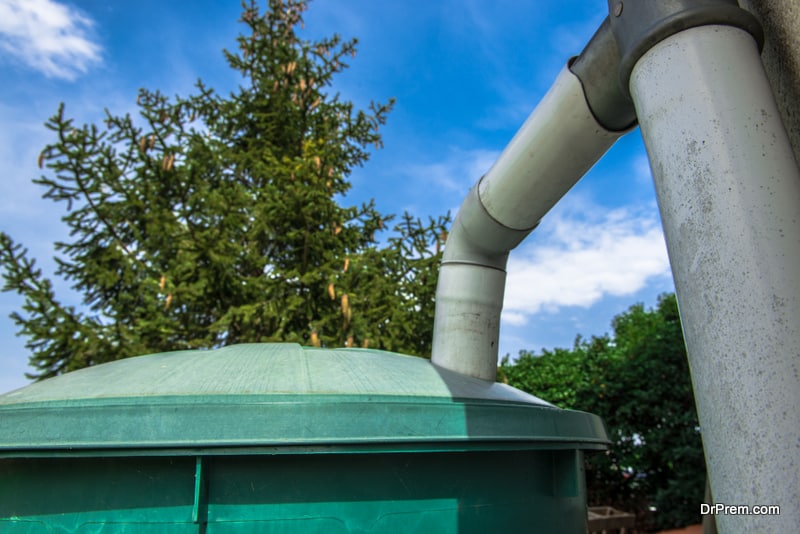Water is pertinent for the survival of all living beings on this earth, including humans. However, extensive usage of fresh water sources has now led to water crisis around the world, especially developing and underdeveloped parts. Luckily, there are ways in which you can ensure this supply does not end, starting with rainwater harvesting.
Rainwater harvesting simply translates to collect and storing water from the surfaces where rainfall occurs. In the case of a house, we collect rainwater from the roofs and store in tanks. Then we can use the stored water for myriad purposes like washing and watering plants. Individuals living in areas with limited water supply can benefit greatly from rainwater harvesting, especially in times of drought.
So how do you go about developing a rainwater harvesting system for your home? Simple, here are some tips that would help you with the process.
Most homes come equipped with rain gutter systems, which channelize the water collected on the roofs to the ground. If your home has such a system in place, all you need to do is channelize the water coming off the pipe into a barrel or tank. Simply cut of a small portion of the downspout and direct it into a barrel kept underneath. This way, when it rains, the water collected on the roof of your home would automatically flow into the barrel and can be used later for other purposes.
You would also need to choose a barrel to place underneath the downspout. Normal barrels in the market would cost around $100.00 and would be able to collect up to 50 gallons of water. You can also choose to build your own rain barrel via a few simple steps. Grab an airtight container and clean it nicely. Seal the container at both ends, keeping only an opening at the top for the rainwater to flow into it, thus eliminating mosquitoes and potential drowning hazards for animals that might otherwise fall into the container by mistake. Refrain from using a clear container, as too much exposure to sunlight would lead to algae growth inside it. Drill a tiny hole near the bottom of the container and attach a spigot or hose bib to it. Use a waterproof sealant to seal the container near the spigot in order to avoid leakages.
You can place the container either on the ground or on top of a few bricks. Although elevating the container a bit would make it easier for you to collect water from the spigot at the bottom, you would need to be extremely careful to place the container on a level area so that it does not topple over.
In most cases, you can simply place the container beneath the downspout (so that it aligns with the hole at the top of the container) and let water flow into it from the roof. You can also opt to use a flexible downspout to connect the downspout to the opening at the top of the container. This would work in cases where you cannot place the container directly underneath the downspout.
You will be surprised to note that such a rainwater harvesting system would enable you to collect a substantial amount of water even when it does not rain much. By connecting a hosepipe to the spigot at the bottom of the container, you can then use the harvested rainwater to wash clothes or water your plants. This way, you will be saving plenty of water otherwise used up in these tasks. If this is the effect for a small rain event, consider how much harvested rainwater you will be able to save and use in the long run.
Summary
Harvesting rainwater is not that hard a task that you can do easily even if you do not have a rainwater gutter system in place. These tips would provide you with an inexpensive way to make use of harvested rainwater, thereby contributing to the environment in a big way and setting an example for friends and family members to follow.


